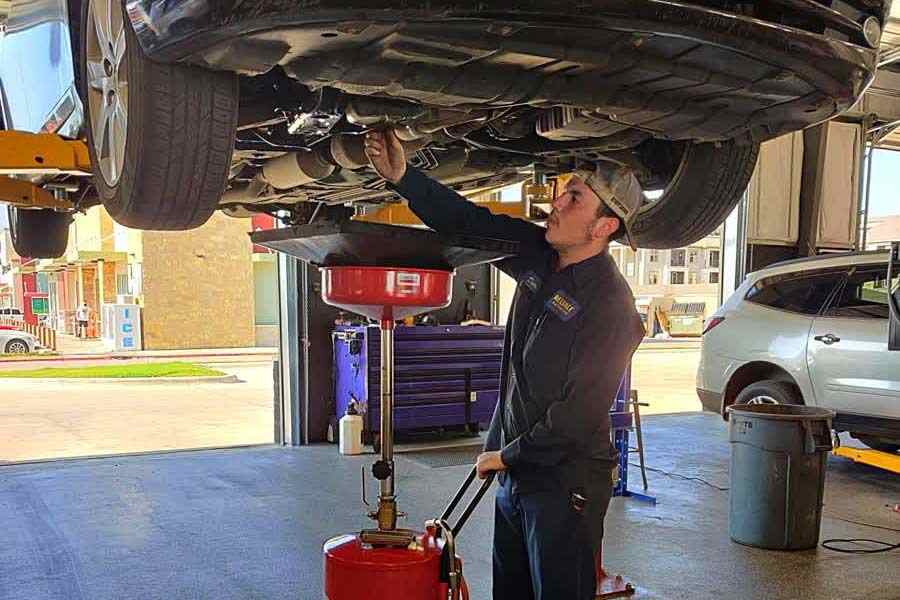Your cars and truck is an intricate equipment with several interconnected systems operating in consistency. It can be challenging to determine the resource of the trouble without appropriate devices when something goes incorrect. An analysis examination is an effective remedy that allows technicians to quickly and properly determine issues within your lorry. Below's just how an analysis test works and the advantages it provides for your cars and truck.
What Is an Analysis Test? An analysis test includes utilizing a specialized scanner to attach to your automobile's Onboard Diagnostics System (OBD-II) This system checks various parts of your car, such as the engine, transmission, exhaust, and electronics, for irregularities. When an issue takes place, the OBD-II system creates mistake codes, which can after that be gotten and assessed by an analysis device.
These codes supply ideas about the breakdown, enabling technicians to resolve the problem effectively.
Exactly How Does an Analysis Examination Work? Scanning for Mistake Codes. The analysis device connects to the OBD-II port, which is usually located under the control panel. The scanner communicates with the car's onboard computer system to remove saved mistake codes.
![]()
Translating the Trouble. Each error code matches to a specific issue or system. A P0171 code indicates a trouble with the air-fuel mix, while a P0301 code represents a misfire in cylinder one.
Directing Additional Investigation. While error codes offer valuable info, they don't constantly inform the entire tale. Specialists might carry out additional tests or assessments to validate the origin and recognize any kind of underlying issues.
What Troubles Can a Diagnostic Test Identify? Diagnostic examinations can reveal a wide variety of issues, including:
Engine misfires or delaying. Transmission malfunctions. Defective sensors, such as oxygen or mass airflow sensors. Problems with the gas injection system. Electric concerns, such as battery or alternator problems. In addition, analysis tools can keep an eye on performance metrics like gas performance, helping to recognize ineffectiveness.
![]()
Advantages of an Analysis Examination. Precision in Identifying Issues. Instead of counting on uncertainty, analysis tests pinpoint the specific source of the problem, making sure that repairs are targeted and efficient.
Time and Expense Financial Savings. By narrowing down the problem quickly, an analysis test decreases the time and labor associated with troubleshooting. This performance usually converts into lower repair costs.
Early Trouble Discovery. Diagnostic examinations can spot issues before they escalate, permitting for timely fixings that protect against major break downs or pricey damage.
![]()
Enhanced Vehicle Performance. Attending to problems recognized via diagnostics assists keep your auto's performance, gas efficiency, and reliability.
When Should You Get a Diagnostic Examination? Inspect Engine Light: If this caution light shows up on your control panel, it's a clear sign that a diagnostic examination is required. Unusual Symptoms: Strange noises, bad acceleration, or reduced gas economy often suggest underlying issues. Regular Maintenance: Routine diagnostic tests can reveal concealed problems, guaranteeing your lorry remains in peak condition. Final thought. A diagnostic examination is a necessary tool for contemporary vehicle maintenance. By leveraging innovative modern technology, it offers accurate and fast insights into your car's health and wellness, allowing technicians to deal with concerns efficiently. Whether you're dealing with a warning light or just desire assurance, a diagnostic examination is the key to keeping your automobile running efficiently and safely.
What Is an Analysis Test? An analysis test includes utilizing a specialized scanner to attach to your automobile's Onboard Diagnostics System (OBD-II) This system checks various parts of your car, such as the engine, transmission, exhaust, and electronics, for irregularities. When an issue takes place, the OBD-II system creates mistake codes, which can after that be gotten and assessed by an analysis device.
These codes supply ideas about the breakdown, enabling technicians to resolve the problem effectively.
Exactly How Does an Analysis Examination Work? Scanning for Mistake Codes. The analysis device connects to the OBD-II port, which is usually located under the control panel. The scanner communicates with the car's onboard computer system to remove saved mistake codes.

Translating the Trouble. Each error code matches to a specific issue or system. A P0171 code indicates a trouble with the air-fuel mix, while a P0301 code represents a misfire in cylinder one.
Directing Additional Investigation. While error codes offer valuable info, they don't constantly inform the entire tale. Specialists might carry out additional tests or assessments to validate the origin and recognize any kind of underlying issues.
What Troubles Can a Diagnostic Test Identify? Diagnostic examinations can reveal a wide variety of issues, including:
Engine misfires or delaying. Transmission malfunctions. Defective sensors, such as oxygen or mass airflow sensors. Problems with the gas injection system. Electric concerns, such as battery or alternator problems. In addition, analysis tools can keep an eye on performance metrics like gas performance, helping to recognize ineffectiveness.

Advantages of an Analysis Examination. Precision in Identifying Issues. Instead of counting on uncertainty, analysis tests pinpoint the specific source of the problem, making sure that repairs are targeted and efficient.
Time and Expense Financial Savings. By narrowing down the problem quickly, an analysis test decreases the time and labor associated with troubleshooting. This performance usually converts into lower repair costs.
Early Trouble Discovery. Diagnostic examinations can spot issues before they escalate, permitting for timely fixings that protect against major break downs or pricey damage.

Enhanced Vehicle Performance. Attending to problems recognized via diagnostics assists keep your auto's performance, gas efficiency, and reliability.
When Should You Get a Diagnostic Examination? Inspect Engine Light: If this caution light shows up on your control panel, it's a clear sign that a diagnostic examination is required. Unusual Symptoms: Strange noises, bad acceleration, or reduced gas economy often suggest underlying issues. Regular Maintenance: Routine diagnostic tests can reveal concealed problems, guaranteeing your lorry remains in peak condition. Final thought. A diagnostic examination is a necessary tool for contemporary vehicle maintenance. By leveraging innovative modern technology, it offers accurate and fast insights into your car's health and wellness, allowing technicians to deal with concerns efficiently. Whether you're dealing with a warning light or just desire assurance, a diagnostic examination is the key to keeping your automobile running efficiently and safely.
Navigation
Home
Latest Posts
Embrace Journey with the Mazda CX-50
Published May 28, 25
1 min read
Get Your Dream Mazda Today
Published May 28, 25
2 min read
Drive the Mazda Means with Jake Sweeney Mazda
Published May 23, 25
2 min read